A Joyful Meeting of Matisse and Renoir
New Encounters takes Matisse and Renoir out of their usual spots at the Barnes Foundation to shed light on the relationship between the two artists.
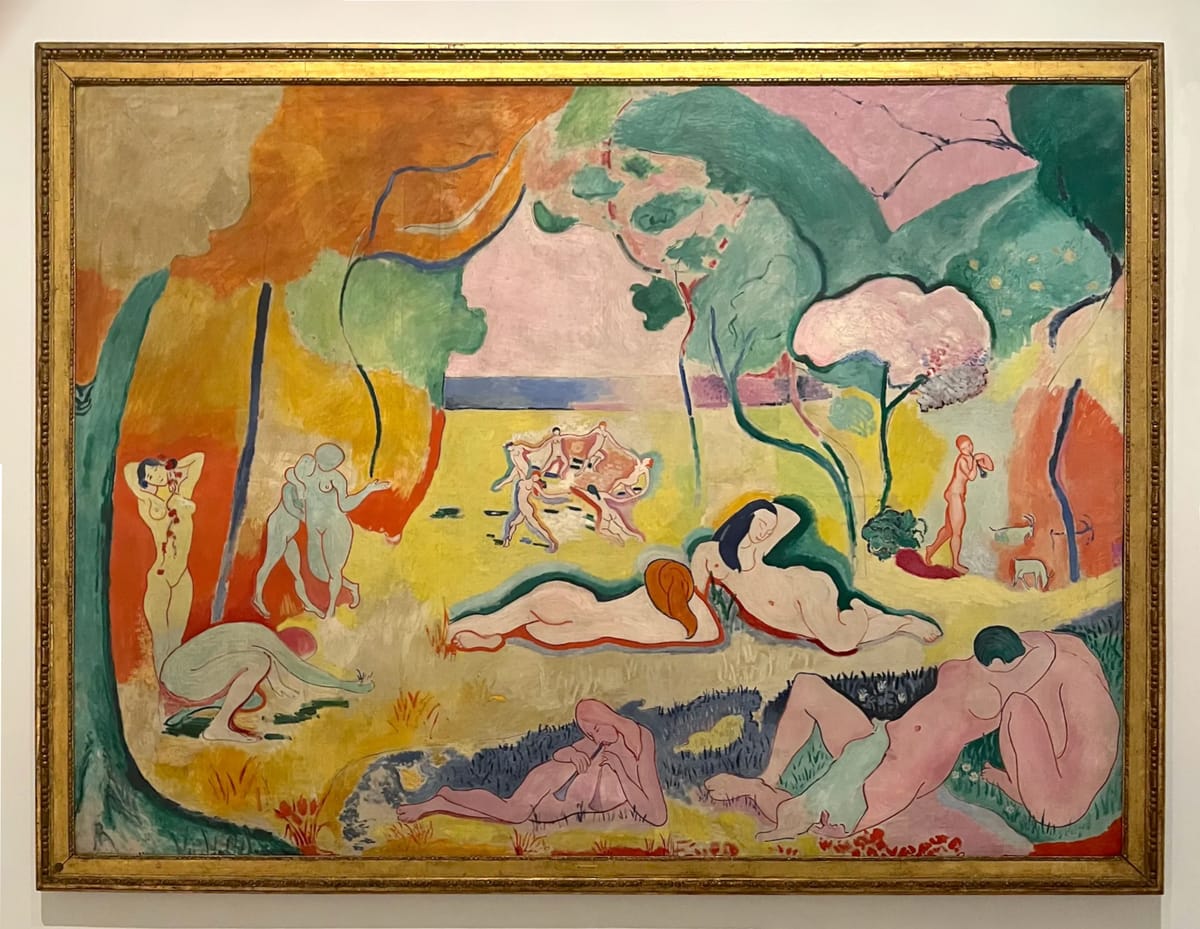
PHILADELPHIA — Matisse & Renoir: New Encounters at the Barnes is the result of a carpe diem moment for curators Cindy Kang and Corrinne Chong. This past summer, while the Barnes Foundation’s upstairs floors were refinished, the art on permanent view in those galleries earned an interim leave. Inspired by the friendship between two of founder Dr. Albert C. Barnes’s favorite artists, Henri Matisse and Pierre-Auguste Renoir, the curators chose 34 of the furloughed works of art, creating a dream of a show in the foundation’s ground floor temporary exhibition galleries.
Toward the end of World War I, when both artists lived in southern France, the middle-aged Matisse asked the elderly Renoir to critique his work. In the two years before he died, the former Impressionist grew to admire his new friend’s unbridled colors and facility with black. During Matisse’s Nice period, from 1917 to 1933, his increased interest in volume, contour, and perspective narrowed the gap between their practices. These generalities, while true, are only loosely relevant to New Encounters, but they speak to the aesthetic relationship between the artists.
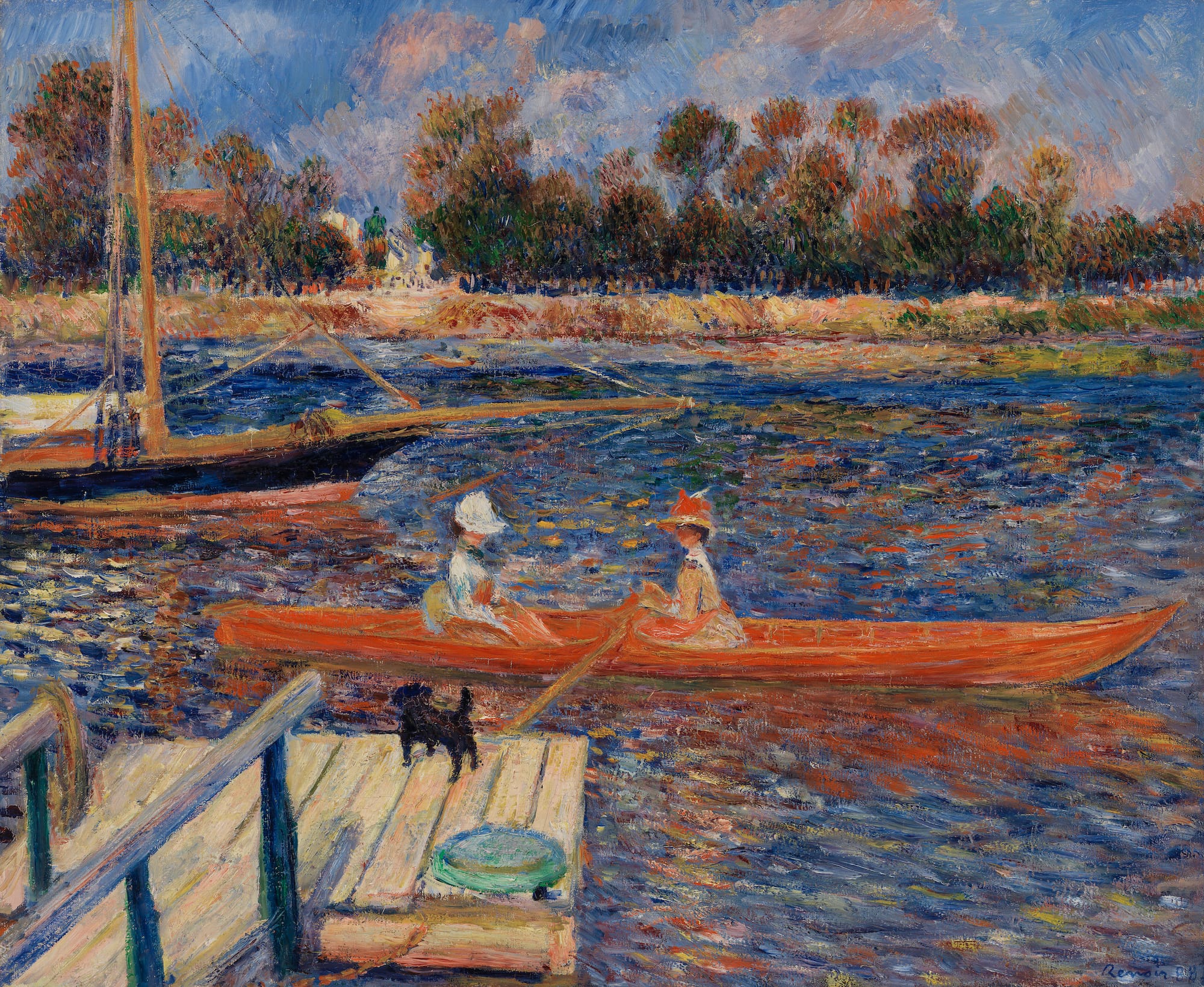
Several connotations shelter within the show's deceptively simple title. For the moment, it’s possible to see Matisse’s startling “Red Madras Headdress” (1907) near his related but independent “The Madras” (1906–7), two works normally consigned to separate galleries. An intimate encounter with Matisse’s majestic “The Joy of Life” (1905–6), the great icon of 20th-century art, awaits Barnes newbies, while veteran aficionados, accustomed to craning their necks to get a good look at the piece, in its unvarying upstairs location high on a wall, can temporarily spend time with this masterwork closer to average eye level. Throughout the painting’s vivid daydream, populated by sensuous figures, the artist excused color from the chore of describing reality: grass is pale purple, the ground yellow, and the sky light lilac.
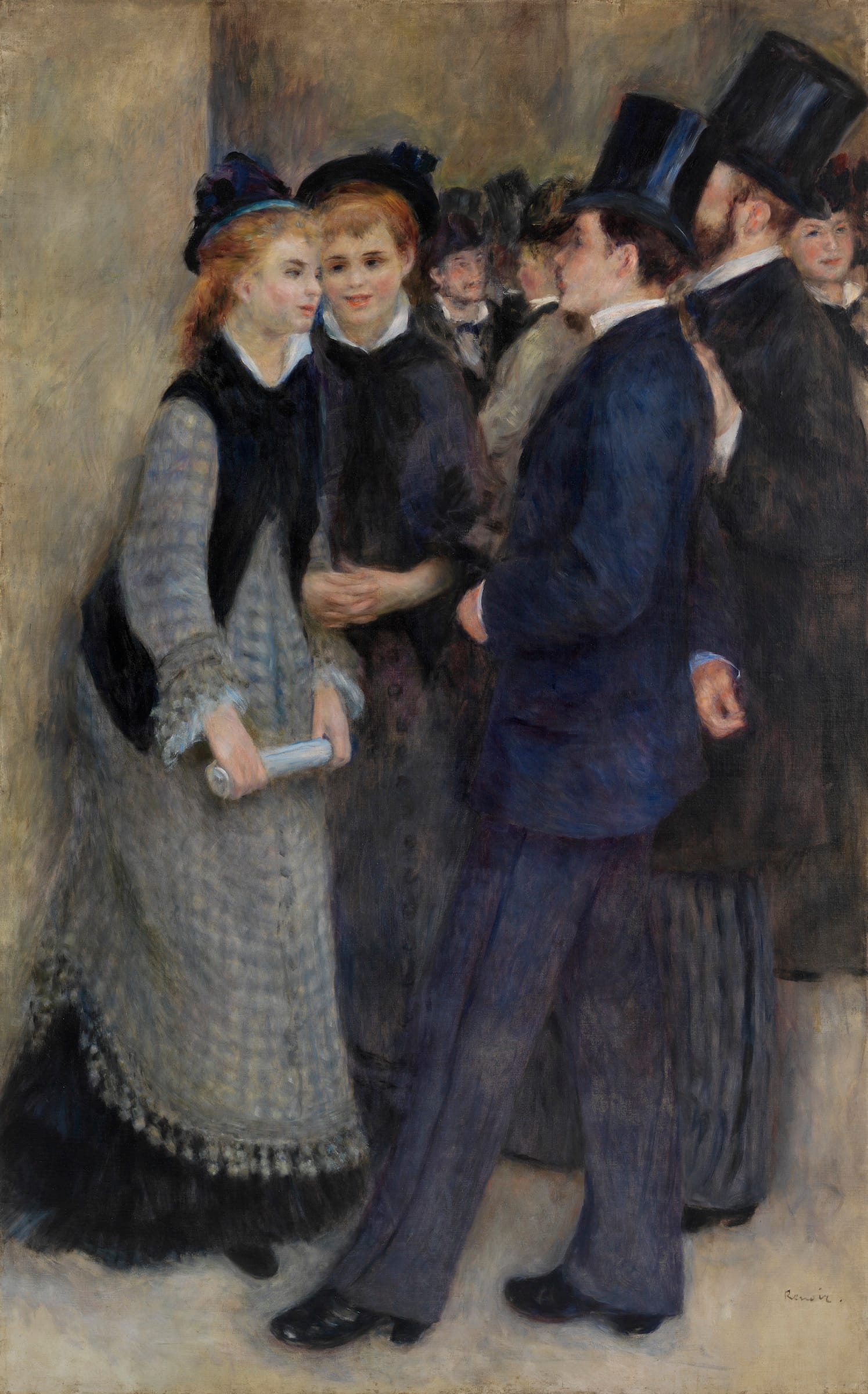
Across New Encounters are several iterations of the curvaceous odalisque in Matisse's “The Music Lesson” (1917). The grandly scaled painting is set in the artist’s living room, where family members are absorbed in activities. An amateur violinist, Matisse may have represented himself by proxy with a violin resting on its case. The foliage and the voluptuous sculpture seen through the window belie the implied depth of the view; space appears flattened, and the pink piano top slides down the face of the canvas.
Nearly all of the 14 works by Renoir in the exhibition are easily recognized as the artist’s, even if you’ve never seen them before. One exception might be his earliest piece on view, “Leaving the Conservatory” (1876–77). It holds me in its thrall whenever I see it. Within a space as compact as an elevator, Renoir spotlit a trio of young people in the foreground. Ignoring the dense, indistinct crowd behind them, they gaze at each other across a void shaped like a champagne flute. Expressive passages of blue, lavender, green, and brown energize the ambiguous setting.
Renoir’s inventive grounds often read as abstractions. Plump stalks of color gently jostle for space on the wall behind the child in “Reading” (c. 1892). In “Grape Gatherers” (c. 1888–89), it’s as if a soft mistral realigned the bundles of color in field and clothing alike. And to convey the impression of a choppy river in “The Seine at Argenteuil” (1888), Renoir called on his alchemical skills to transform bold paint marks into water.
The Barnes Foundation is the great legacy of the visionary, intractable art collector Dr. Barnes, who died in 1951. He established the foundation in the 1920s as a private school for art appreciation that used his collection as teaching materials. Classes met in his galleries to puzzle out the wall “ensembles,” the fixed arrangements of objects and paintings that Barnes juxtaposed to nurture students’ visual experience of the ways artists handled color, line, light, and space. The ensembles remain as they were at the time of his death.
It's not necessary to know the singular history of the Barnes Foundation to enjoy the serendipitous pleasures of New Encounters. But it provides a context to understand why this occasion is so significant. After September 8, the artworks return to their upstairs posts to rejoin the ensembles from whence they came.
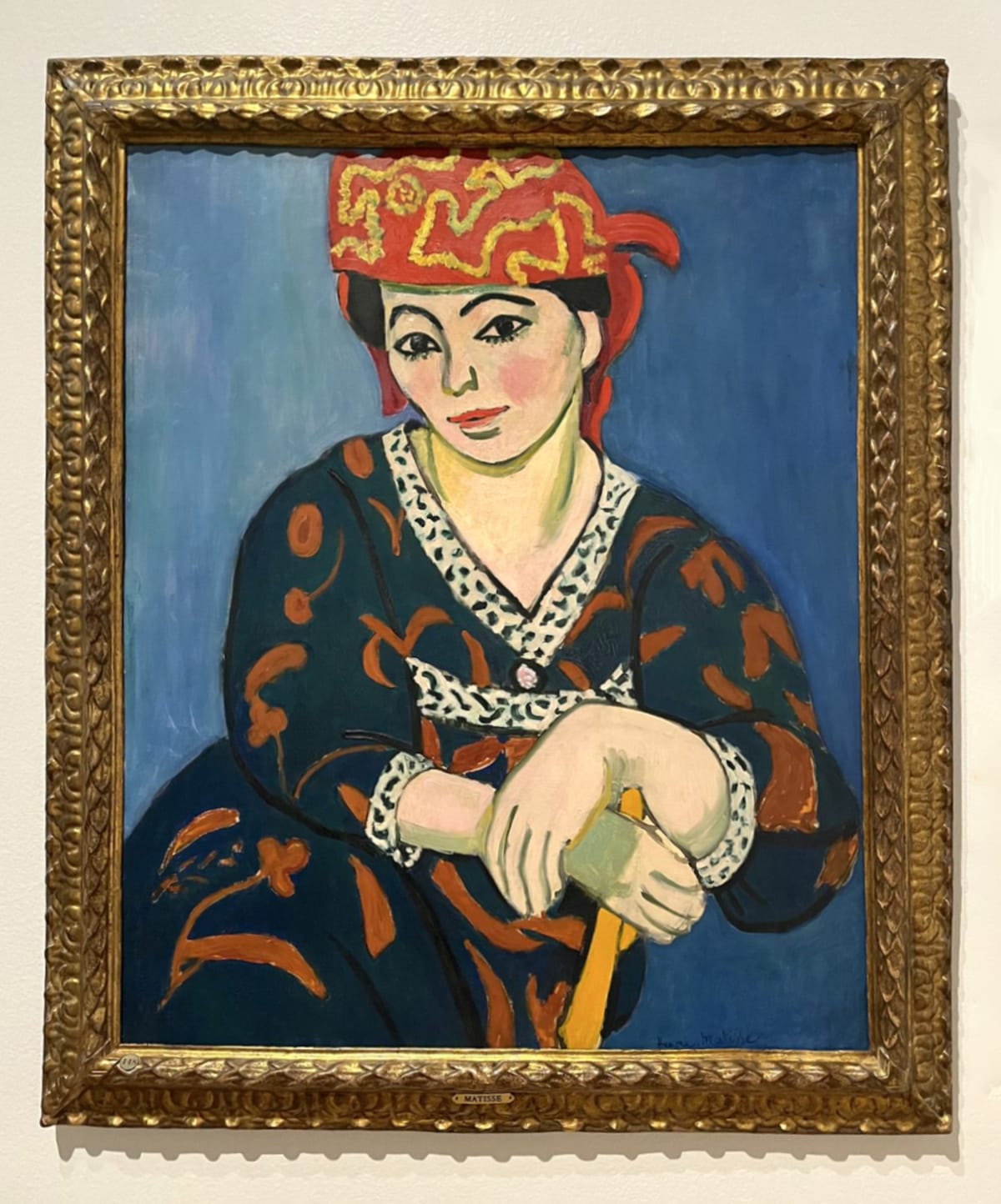
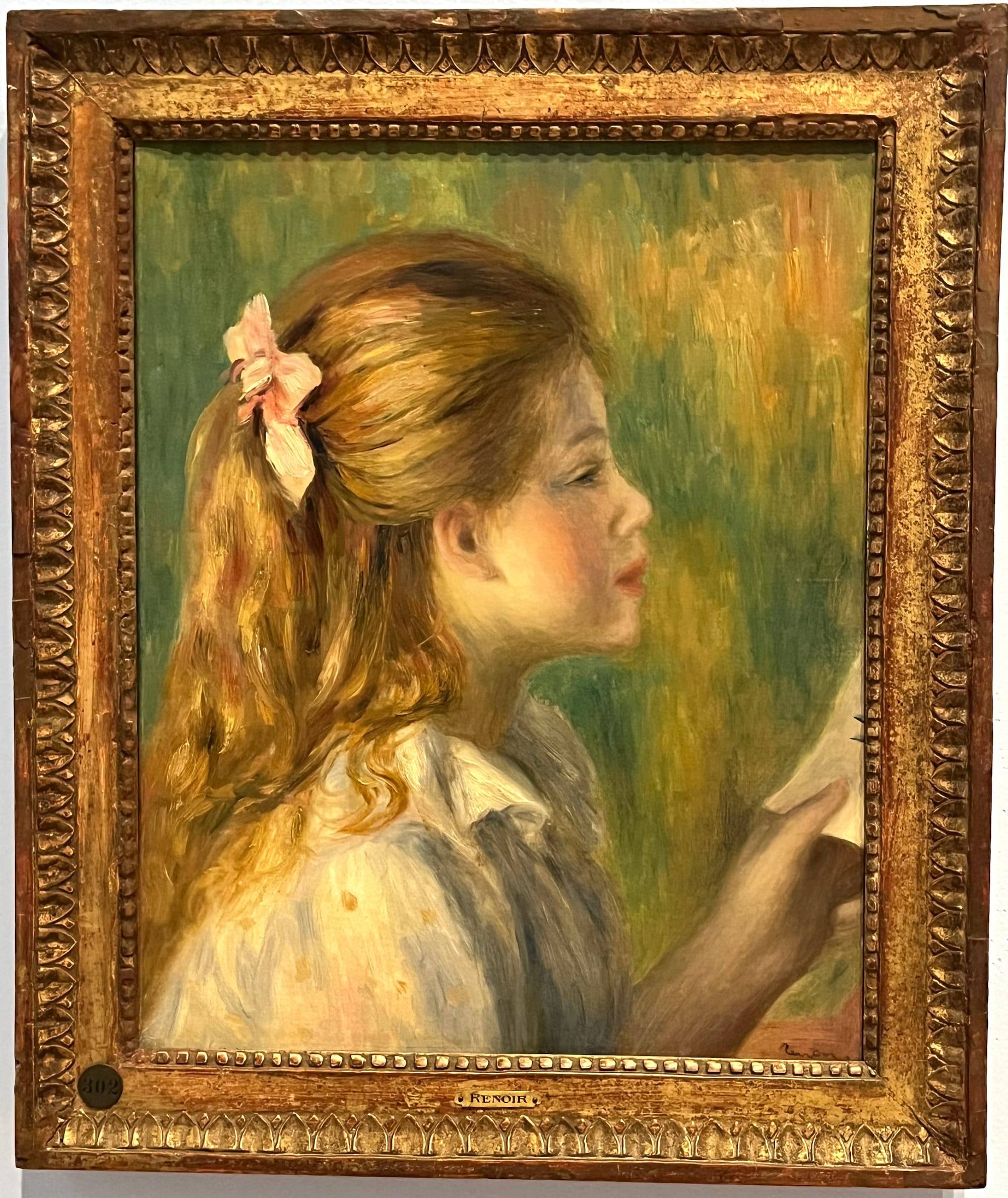
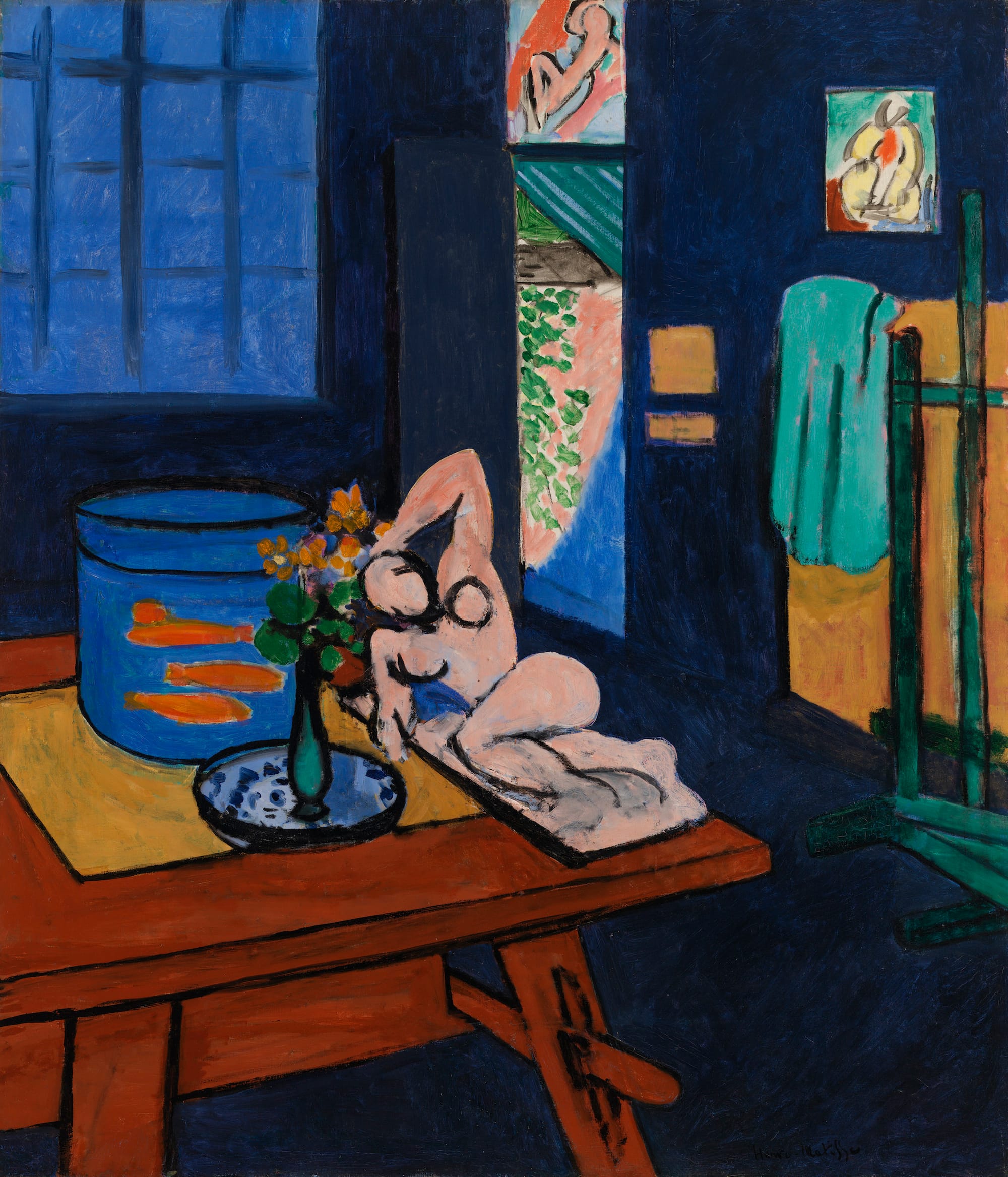

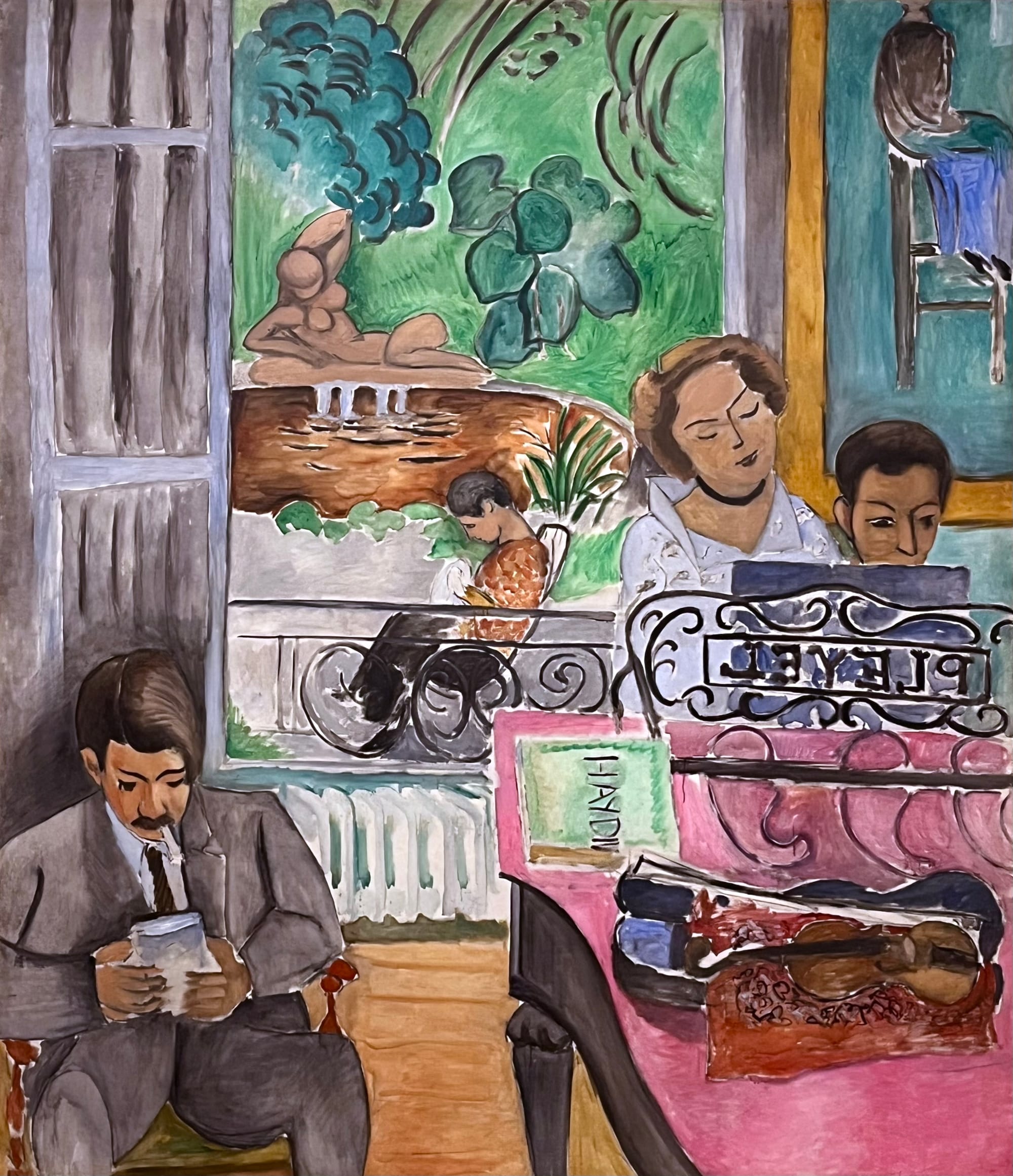
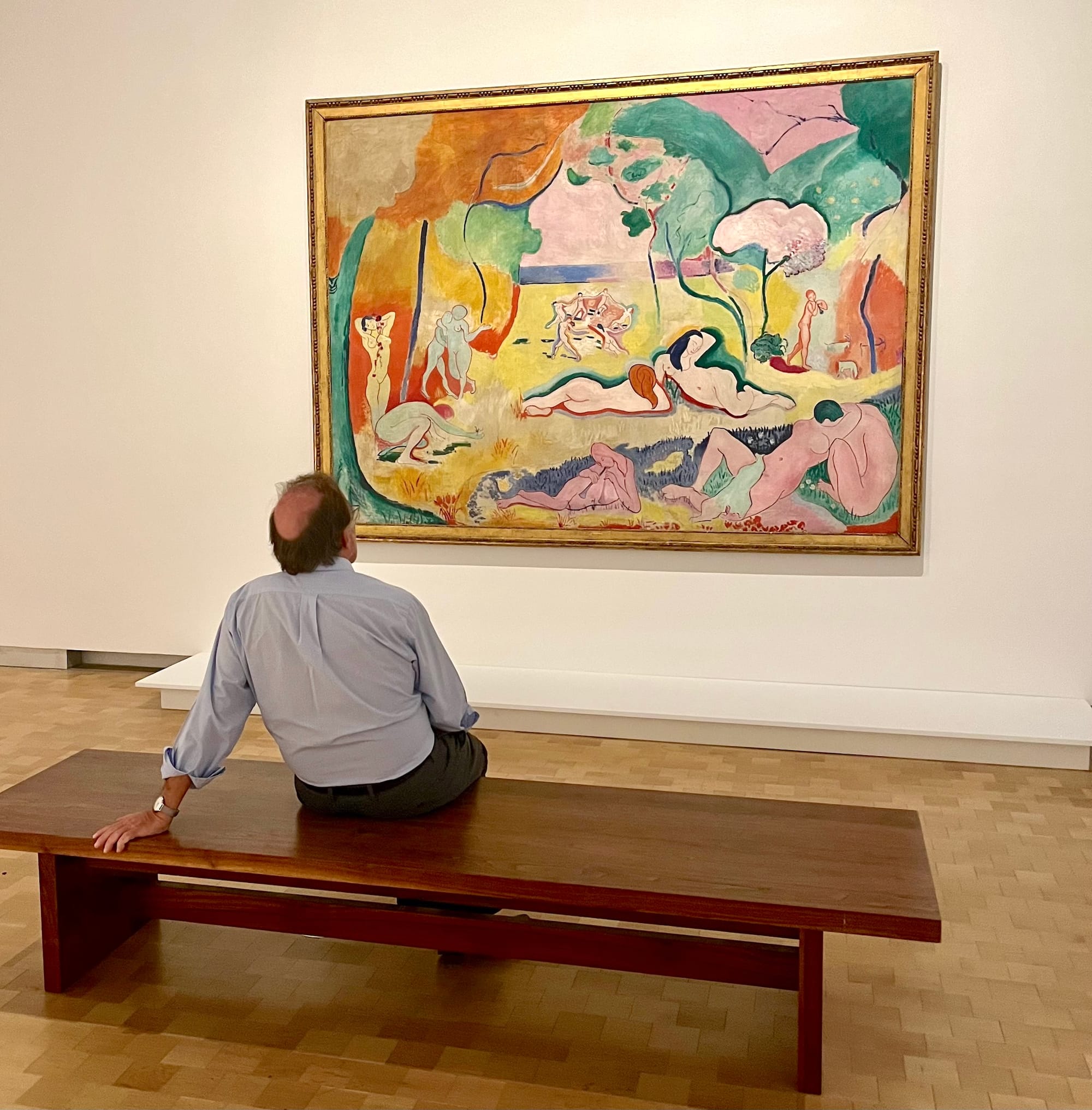
Matisse & Renoir: New Encounters at the Barnes continues at the Barnes Foundation (2025 Benjamin Franklin Parkway, Philadelphia, Pennsylvania) through September 8. The exhibition was curated by Cindy Kang and Corrinne Chong.





